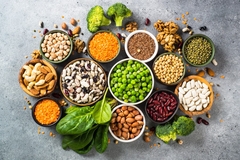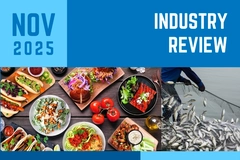
- Industry news
Industry news
- Category news
Category news
- Reports
- Key trends
- Multimedia
- Journal
- Events
- Suppliers
- Home
- Industry news
Industry news
- Category news
Category news
- Reports
- Key trends
- Multimedia
- Events
- Suppliers
Pushing for premium: Innova Market Insights outlines growing sophistication of Europe’s chocolate cravings

15 Oct 2019 --- A new report from Innova Market Insights highlights the growing sophistication of Europe’s appetite for chocolate, with a push towards premium and indulgent products clearly reflected in NPD. In line with this demand, the analysis highlights that innovators are no longer restricted to simple milk, dark or white chocolate types. With the emergence of chocolate made from the entire cacao bean, alongside ruby chocolate, European consumers are craving new and exquisite varieties.
“Limits in chocolate development are being broken down,” Lu Ann Williams, Director of Innovation at Innova Market Insights, tells FoodIngredientsFirst. “Ruby chocolate has emerged as an entirely new concept within chocolate formulation, while darkmilk choices are also hitting the shelves, offering a halfway point between rich dark and smooth milk recipes.”

“There is no arguing that Europeans love their chocolate,” outlines Innova Market Insights. On average, three-quarters of European consumers include chocolate in a typical grocery basket. Furthermore, consumption rates per capita are among the highest in the world, with annual intakes of 10kg or more in six of the West European nations.”
 Activity in chocolate blocks continues to grow, representing 45 percent of European launches in 2018.Activity in chocolate blocks continues to grow, representing 45 percent of the region’s launches in 2018, while wrapped chocolates showed fastest growth in launch numbers between 2014 and 2018. At the same time, NPD in more everyday chocolate bars or countlines has been sliding.
Activity in chocolate blocks continues to grow, representing 45 percent of European launches in 2018.Activity in chocolate blocks continues to grow, representing 45 percent of the region’s launches in 2018, while wrapped chocolates showed fastest growth in launch numbers between 2014 and 2018. At the same time, NPD in more everyday chocolate bars or countlines has been sliding.
Premiumization of the market is further indicated by growing use of dark chocolate, which increased its penetration from 25 percent to 35 percent of launches between 2014 and 2018, while there was a comparative drop in milk chocolate products, down from 71 percent to 59 percent.
Meanwhile, Barry Callebaut – creator of the novel ruby chocolate variety in 2018 – has followed up with the introduction of WholeFruit chocolate, which it claims is the first to use the entire cacao fruit, rather than just the beans. This results in a fruitier flavor, while also appealing to eco-conscious customers as it reduces waste. Additionally, WholeFruit is said to contain 90 percent more fiber and 25 percent more protein than most dark and milk chocolates.
Barry Callebaut targets a launch of its newest chocolate variety in the EU in mid-2020 or by 2022. “The US will see the first use of WholeFruit chocolate but as soon as European approvals are achieved, the region’s ‘chocoisseurs’ will certainly be ready for it,” notes Innova Market Insights.
Commenting on the introduction of ruby chocolate and WholeFruit chocolate, Williams remarks, “They are both exciting concepts but at the end of the day, taste comes first. Ruby is exciting and aligns with Innova’s Discovery trend and WholeFruit chocolate also aligns with sustainability. If these products are made to taste great, they could be big winners.”
Exciting chocolate trends to watch out for
The push for new flavor varieties, sugar reduction and responsible cocoa sourcing are significant themes prevalent across the chocolate sector this year.
“Flavors and inclusions are really exciting in chocolate right now. Some companies are really pushing the boundaries on what’s possible in chocolate. There is always something new like herbs or florals to create a new taste experience,” says Williams.
“It’s also nice to see KitKat’s ruby and matcha chocolates. This innovation in the chocolate itself is very interesting. KitKat in Japan has always been innovative and exciting to watch and it’s great that we are seeing some of those products now available in other markets,” she adds.
Following the premiumization of KitKat chocolate bars in Japan, Nestlé Confectionery is launching its first direct-to-consumer offering in the UK with the introduction of the KitKat Chocolatory. The luxury handcrafted KitKats will be available in Britain before the end of this year and include the option for shoppers to visit an online store and “create their own break” by choosing from four types of chocolate and 14 ingredients to build their own eight-finger KitKat.
Addressing consumer attention on responsible cocoa sourcing, Williams explains, “Just as we saw with clean label, the boundaries of sustainability are growing every year and it can now mean m Responsible and sustainable cocoa sourcing continues to gather pace.any different things for consumers. It can be air quality, water use, pollution or ethical and social issues. I think the environmental risk of plastic packaging is an easy one for consumers to understand because you can see that it has an impact. It’s similar to the reasons behind sugar-free chewing gum and energy drinks being the most successful “functional” foods. Consumers can feel the benefit.”
Responsible and sustainable cocoa sourcing continues to gather pace.any different things for consumers. It can be air quality, water use, pollution or ethical and social issues. I think the environmental risk of plastic packaging is an easy one for consumers to understand because you can see that it has an impact. It’s similar to the reasons behind sugar-free chewing gum and energy drinks being the most successful “functional” foods. Consumers can feel the benefit.”
“With responsible sourcing, it is not as visible for consumers so it’s more difficult to understand the connection. However, there is an increasing focus around sustainable chocolate and cocoa, so I think consumers are going to feel more of a connection over time. Hearing that chocolate might disappear makes an attention grabbing headline so I think it is something that will start to resonate more with mainstream consumers,” she adds.
Earlier this month, the UN Development Programme (UNDP) launched a chocolate bar as part of a social experiment. Using blockchain technology, The Other Bar gives consumers the choice to donate directly back to cocoa farmers or to get a discount on their next purchase. The FairChain Foundation – who conceived the idea and developed the technology behind the bar – highlights that global brands spend over £500 billion (US$615 billion) a year on marketing, while only £140 billion (US$171.8 billion) is needed to end global poverty.
Tradin Organic recently released its first cocoa sustainability report, which highlights key issues from deforestation to child labor. Meanwhile, Barry Callebaut’s “Forever Chocolate” scheme is the number one sustainability strategy in the packaged foods industry, according to data from research and analysis firm Sustainalytics’ annual assessment.
By Benjamin Ferrer











